Messier Catalog: M81 - M90
M71 - M80 | Messier Menu | M91 - M100
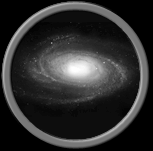 M81
Galaxy in Ursa Major
Common Names: Bode's Galaxy
3031
6.9
9h 55.6m
+69° 04'
M81
Galaxy in Ursa Major
Common Names: Bode's Galaxy
3031
6.9
9h 55.6m
+69° 04'
The constellation of Ursa Major is the site of a beautiful spiral galaxy known as M81. This is one of the easiest and most rewarding galaxies for the amateur astronomer. It is a bright object, at magnitude 6.8, and can be easily located with any optical instrument. Some say it can be spotted with the naked eye under dark skies and ideal observing conditions. M81 is the brightest member of a group of galaxies called the M81 group. This galaxy is believed to have interacted with its close neighbor, M82, at some point in the past. It was also the site of a supernova explosion in 1993. M81 is located approximately 12 million light-years from Earth.
Image credit: NASA, ESA, and The Hubble Heritage Team (STScI/AURA)
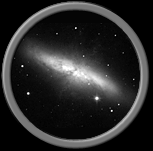 M82
Galaxy in Ursa Major
Common Names: Cigar Galaxy
3034
8.4
9h 55.8m
+69° 41'
M82
Galaxy in Ursa Major
Common Names: Cigar Galaxy
3034
8.4
9h 55.8m
+69° 41'
M82 is another member of the M81 group of galaxies found in the region of Ursa Major. This object is officially classified as an irregular galaxy. Its shape contains no discernable structure. It is believed that this galaxy's core has suffered from a close encounter with its neighbor, M81. The elongated shape of this galaxy has earned it the name Cigar Galaxy. M82 is a strong source of infrared radiation. In fact, it is the brightest galaxy in the sky in infrared light. This galaxy is located about 12 million light-years from Earth. Its close proximity to M81 makes it easy to find, although it is a somewhat disappointing sight in anything but the largest telescopes.
Image credit: N.A.Sharp/NOAO/AURA/NSF
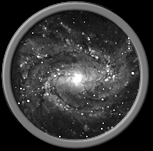 M83
Galaxy in Hydra
Common Names: Southern Pinwheel
5236
7.6
13h 37m
-29° 52'
M83
Galaxy in Hydra
Common Names: Southern Pinwheel
5236
7.6
13h 37m
-29° 52'
In the constellation Hydra can be found a spectacular face-on spiral galaxy. This is M83, the Southern Pinwheel Galaxy. It earned its name from the distinct pinwheel shape of its long spiral arms. Color photographs of this galaxy reveal a wide range of colors from the yellow central core of old stars to the blue spiral arms of young stars. Several red knots can also be seen. These are gaseous nebulae where active star formation is taking place. Dark lanes of dust are also visible throughout the galaxy's disk. M83 is situated about 15 million light-years from Earth. It is receding from us at around 337 km/sec. This galaxy has been the site of six supernovae, which is more than any other Messier galaxy. It was also the first galaxy to be discovered beyond the local group.
Image credit: Bill Schoening/NOAO/AURA/NSF
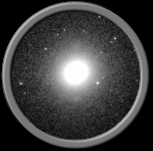 M84
Galaxy in Virgo
Common Names: None
4374
9.1
12h 25.1m
+12° 53'
M84
Galaxy in Virgo
Common Names: None
4374
9.1
12h 25.1m
+12° 53'
The constellation Virgo is the location of a small and dim galaxy known as M84. It was originally thought to be an elliptical galaxy. But more recent evidence suggests that is it actually a face-on lenticular galaxy. Lenticular galaxies are characterized by a disk shape with no conspicuous structure. M84 is a member of the Virgo cluster of galaxies, which contains a total of 16 galaxies in the Messier catalog. This galaxy was the site of a supernova in 1957 and two others in 1980 and 1991. It is located about 60 million light-years from Earth. With a magnitude of only 9.1, it is best suited for viewing with a large telescope.
Image credit: Two Micron All Sky Survey (2MASS)
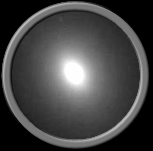 M85
Galaxy in Coma Berenices
Common Names: None
4382
9.1
12h 25.4m
+18° 11'
M85
Galaxy in Coma Berenices
Common Names: None
4382
9.1
12h 25.4m
+18° 11'
Coma Berenices is the home of M85, a lenticular galaxy that is part of the Virgo cluster of galaxies. It is very similar in appearance and brightness to M84. It was the site of a supernova in 1960 that reached a magnitude of 11.7. This galaxy is located some 60 million light-years from Earth and is believed to have a diameter of around 125,000 light-years. It appears to be composed almost entirely of old yellow stars and is receding from us at about 700 km/sec. As with M84, this galaxy is a disappointing sight in anything but a large telescope.
Image credit: NOAO/AURA/NSF
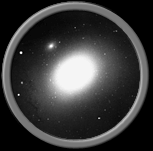 M86
Galaxy in Virgo
Common Names: None
4406
8.9
12h 26.2m
+12° 57'
M86
Galaxy in Virgo
Common Names: None
4406
8.9
12h 26.2m
+12° 57'
Yet another lenticular galaxy to be found in the Virgo cluster is M86. This is a large, bright object that some believe may actually be an elliptical galaxy. It is surrounded by an extremely faint system of globular clusters. M86 is located at the heart of the Virgo cluster and lies about 60 million light-years from Earth. It forms a close group with another large galaxy, M84. Unlike many of the other galaxies in this cluster, M86 is actually approaching us at the blinding speed of 1500 km/sec. It is believed that the high gravitational field of this massive cluster of galaxies is responsible for M86's unusually high velocity. At magnitude 8.9 this galaxy can be located with binoculars on a good night, but the best observing will be done with a telescope.
Image credit: NOAO/AURA/NSF
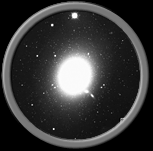 M87
Galaxy in Virgo
Common Names: Virgo A
4486
8.6
12h 30.8m
+12° 24'
M87
Galaxy in Virgo
Common Names: Virgo A
4486
8.6
12h 30.8m
+12° 24'
The constellation Virgo is the site of an elliptical galaxy known as M87. This galaxy is also a member of the famous Virgo cluster of galaxies. It is located about 60 million light-years from Earth and has a diameter of around 120,000 light-years. M87 lies within the heart of the Virgo cluster. It is well known for huge system of globular clusters that can be easily seen on long exposure photographs. This galaxy also features an unusual jet of gaseous material that extends out thousands of light-years. A supernova explosion occurred in this galaxy in 1919 but was not discovered until 1922 when it discovered on photographs of the galaxy.
Image credit: NOAO/AURA/NSF
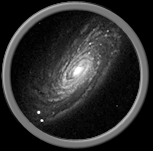 M88
Galaxy in Coma Berenices
Common Names: None
4501
9.6
12h 32m
+14° 25'
M88
Galaxy in Coma Berenices
Common Names: None
4501
9.6
12h 32m
+14° 25'
One of the brighter members of the Virgo cluster is the spiral galaxy, M88. Located about 60 million light-years from Earth, this galaxy is inclined approximately 30 degrees to our line of sight. This gives it an elongated visual appearance, which resembles that of the Andromeda Galaxy, M31. M88 is believed to be nearly 130,000 light-years in diameter and is receding away from us at about 2000 km/sec. This is one of the more rewarding galaxies in the Virgo cluster for observers using small instruments. A large telescope will bring out some of the more subtle details.
Image credit: NOAO/AURA/NSF
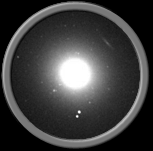 M89
Galaxy in Virgo
Common Names: None
4552
9.8
12h 35.7m
+12° 33'
M89
Galaxy in Virgo
Common Names: None
4552
9.8
12h 35.7m
+12° 33'
M89 is also a member of the incredible Virgo cluster of galaxies. This is an elliptical galaxy and is almost exactly circular in appearance. It is not known if it is actually circular in shape or if it is an elliptical in shape viewed end-on. This galaxy is unusual in that is appears to be surrounded by a type of enveloping structure which extends 150,000 light-years from the galaxy. It also features a jet-like structure that extends over 100,000 light-years. M89 is located some 60 million light-years from Earth. At a magnitude of only 9.8, it is best suited for viewing with a large telescope.
Image credit: NOAO/AURA/NSF
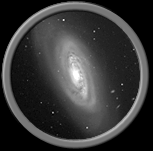 M90
Galaxy in Virgo
Common Names: None
4569
9.5
12h 36.8m
+13° 10'
M90
Galaxy in Virgo
Common Names: None
4569
9.5
12h 36.8m
+13° 10'
Also found in the constellation of Virgo is a spiral galaxy known as M90. This is one of the larger spiral galaxies in the Virgo cluster. It is located about 60 million light-years from Earth and is approaching us at a speed of 383 km/sec. Its visual appearance is that of a tightly wound spiral with smooth, bright spiral arms. It is believed that the only active star formation is taking place within the dark dust lanes near the center of the galaxy. M90 has a visual magnitude of only 9.5, making it a tough target for binocular observers. Large telescopes will provide the best viewing.
Image credit: NOAO/AURA/NSF

 M81
Galaxy in Ursa Major
M81
Galaxy in Ursa Major M82
Galaxy in Ursa Major
M82
Galaxy in Ursa Major M83
Galaxy in Hydra
M83
Galaxy in Hydra M84
Galaxy in Virgo
M84
Galaxy in Virgo M85
Galaxy in Coma Berenices
M85
Galaxy in Coma Berenices M86
Galaxy in Virgo
M86
Galaxy in Virgo M87
Galaxy in Virgo
M87
Galaxy in Virgo M88
Galaxy in Coma Berenices
M88
Galaxy in Coma Berenices M89
Galaxy in Virgo
M89
Galaxy in Virgo M90
Galaxy in Virgo
M90
Galaxy in Virgo